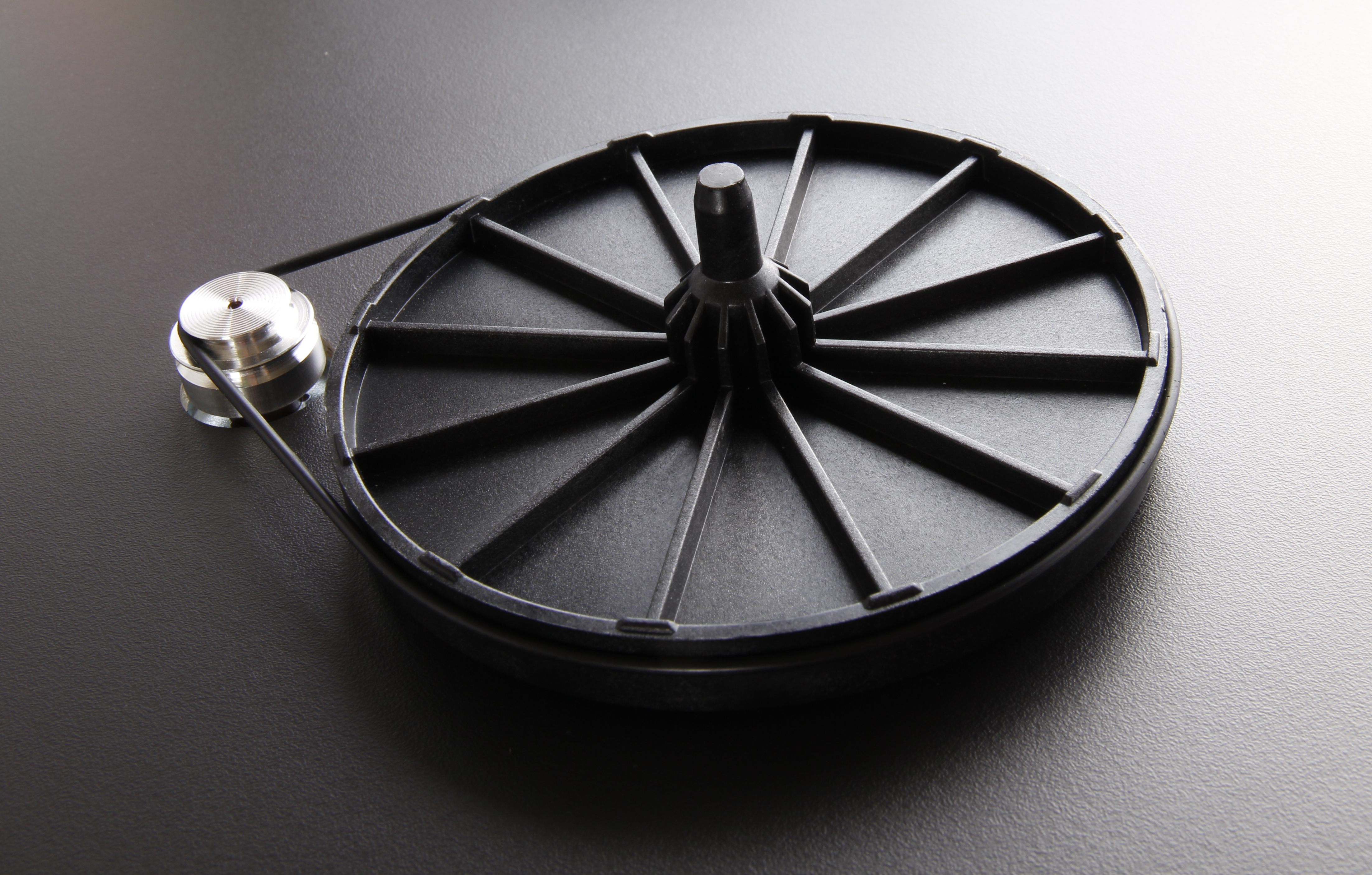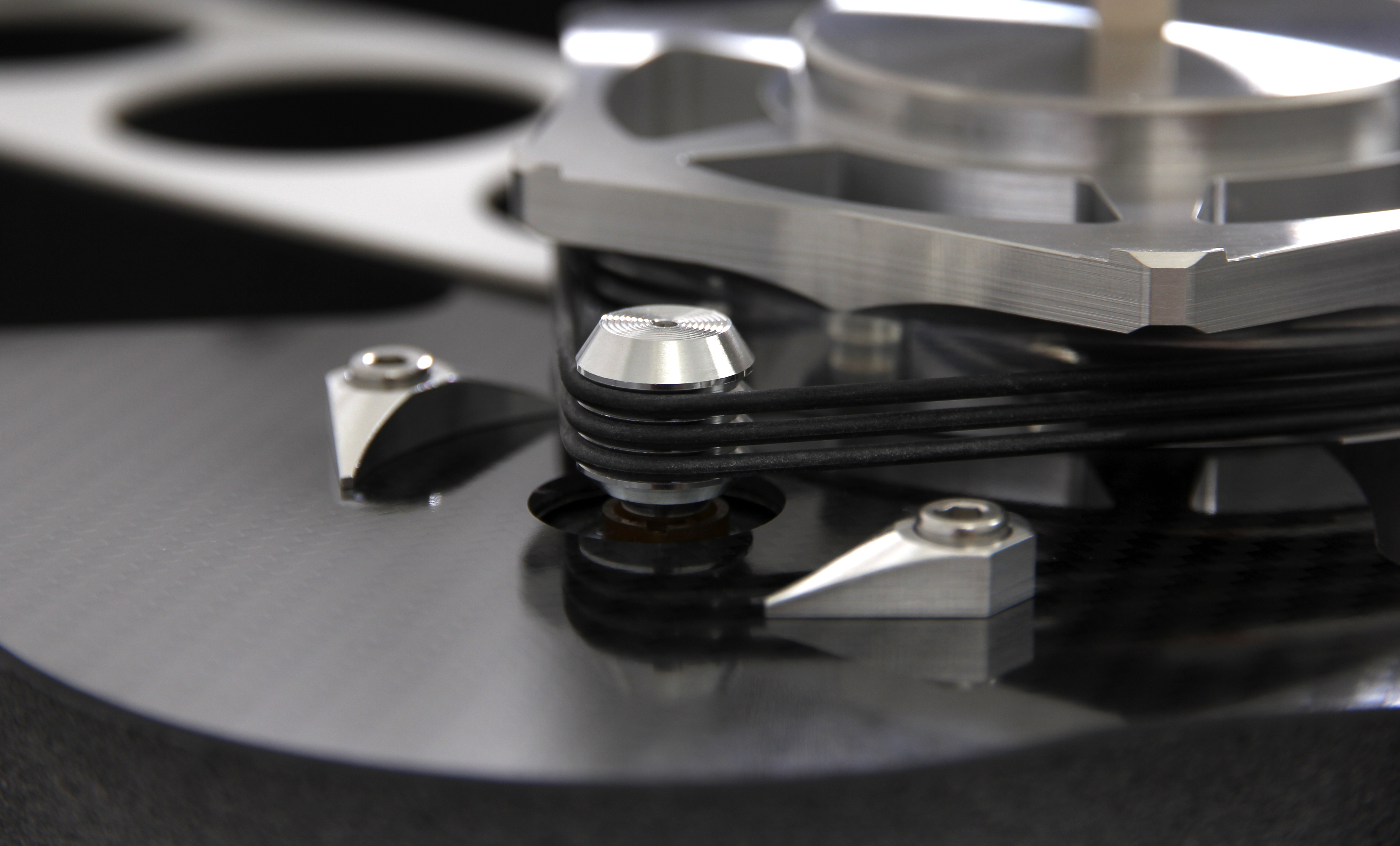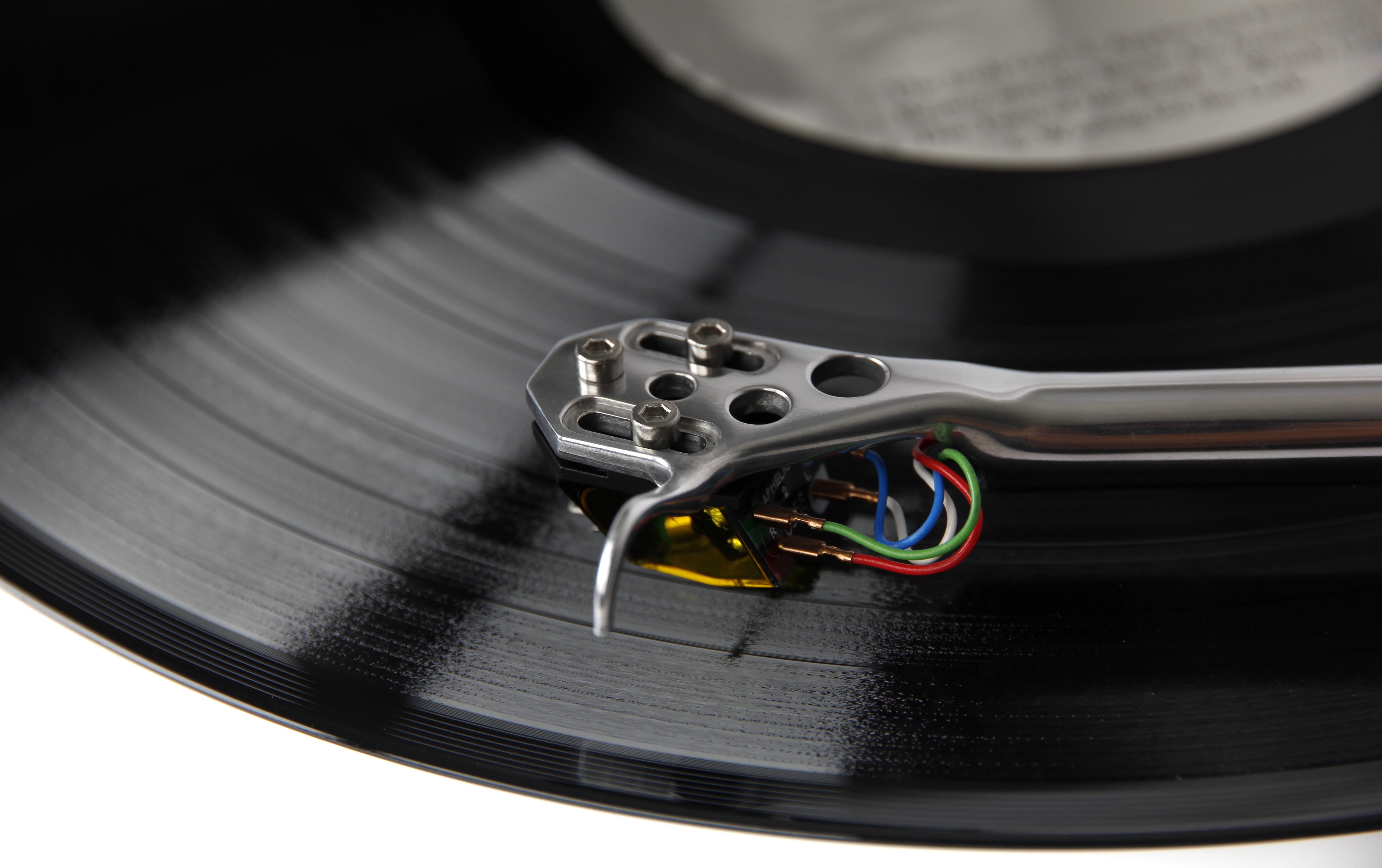Belt Drive and Direct Drive Turntables: Everything You Need To Know
Posted by The Sound Organisation on Apr 10th 2024
- Belt-Drive: Imagine a simple rubber band stretched between two wheels. That's essentially the principle behind a belt-drive turntable. The motor sits off to the side, unconnected to the platter. A belt wraps around the motor's pulley and the platter's inner rim, transferring rotational force. This indirect connection offers several advantages like noise reduction, mechanical isolation, and speed stability.
- Direct-Drive: Here, the motor is a powerhouse, mounted directly beneath the platter. The spindle (the central rod that holds the record) or the platter is connected to the motor shaft, eliminating the need for a belt. This translates to superior torque, the ability to quickly bring the platter up to speed and maintain it even under resistance.
Ah, vinyl. The warm crackle, the pops and clicks – a sonic experience that digital music simply can't replicate. But before you embark on this analog adventure, a crucial decision awaits: belt-drive or direct-drive turntable? As your friendly neighborhood hi-fi experts and distributors fine audio equipment, let's delve into the world of these two dominant turntable designs, exploring their pros, cons, and which might be the perfect fit for your listening preferences.
Under the Hood: The Drive Train Explained
The core difference lies in how the platter, the rotating platform that holds your record, spins.

- Belt-Drive: The hero here is the belt. It acts as a natural insulator, dampening motor vibrations that could travel up the spindle and into your cartridge, ultimately coloring the audio with unwanted hum. However, belt tension can affect speed stability over long periods. In some cases, old, damaged or cheaper belts can add additional noise from their uneven surface. (We suggest the Rega EBLT drive belts if you have a Rega Turntable)
- Direct-Drive: While modern direct-drive turntables have come a long way, motor noise can still be an issue, especially in budget models. However, their high torque makes them ideal for DJs who need to start and stop playback quickly, or scratch records, where the motor needs to overcome resistance from the user. Modern Direct Drive turntables have created new ways to improve isolation and overall sound quality.
- Belt-Drive: A well-made belt-drive turntable with a heavy platter can achieve excellent speed stability. The momentum of the heavy platter helps maintain consistent speed once it reaches the desired RPM (revolutions per minute) entering into a "flywheel" state that helps regulate the speed. However, worn or loose belts can contribute to speed fluctuations and some turntables require you to manually change the belt's connection between the motor and platter in to change the speed from 33 1/3 to 45 RPM.
- Direct-Drive: Direct-drive turntables generally excel in speed stability due to their high torque and sophisticated motor control systems. This makes them ideal for DJs who require precise and unwavering speed for beat matching and other techniques. Direct drives also have speed switches that can change the desired RPM for the record you're listening to.
The Sound of Silence (or Not): Noise and Isolation
One of the biggest considerations is noise. The ideal scenario is for your turntable to transmit only the sweet sounds on the record, not the whirring of its internal workings.
Speed Demons vs. Steady State: Speed Stability
Accurate speed is paramount for faithful music reproduction. Any deviation can alter the pitch of the music, making it sound slightly faster or slower.

- Belt-Drive: The good news? Belts are relatively inexpensive and easy to replace yourself. The downside? Over time, they can wear out and stretch, requiring periodic replacement. Additionally, the suspension system that isolates the motor can introduce complexity and potential points of failure.
- Direct-Drive: Direct-drive turntables are generally more robust, with fewer moving parts. However, the motor is a more complex and potentially expensive component to repair if it fails.
- Automatic vs. Manual: Automatic turntables can automatically lift the tonearm and return it to its rest at the end of the record, while manual turntables require you to do so by hand. Automatic features add complexity, but manual operation offers more precise control over cueing (placing the needle on a specific spot on the record).
- Cartridge: The cartridge is responsible for converting the record's grooves into electrical signals. Many turntables come with a pre-mounted cartridge, but upgrading to a higher-quality cartridge can significantly improve sound quality. There are two main types of cartridges: Moving Coil (MC) and Moving Magnet (MM). We could write a whole other explainer on the differences between those two, but the most important to note is that MM cartridges give a stronger output (often at the expense of sound quality), while MC cartridges give a weaker output but are generally considered more responsive and provide better performance.
- Pre-amplifiers and Phono Stages: Some turntables have a built-in pre-amplifier, which boosts the weak signal from the cartridge before sending it to your receiver or amplifier. A pre-amp specifically designed for a turntable is called a phono stage, and is necessary for turntables with moving coil cartridges. An external pre-amp often provides greater flexibility and control over the sound and are easy to upgrade. Internal phono stages are typically more difficult to replace or repair.
- Connectivity: Most turntables connect to the pre-amp or amplifier via an RCA cable. But some new models come with internal Bluetooth technology. Those you might lose some audio fidelity via Bluetooth, the ease in connecting to a Bluetooth enabled speaker or amplifier is a major consideration depending on your set-up. You might also want to look at whether your turntable has an on-board headphone jack that is compatible with your favorite pair of cans.
- Speed Selection: Similar to automatic vs. manual, some turntables have a speed controller that you can use to select the RPM of your turntable. Some have two speeds (33 1/3 and 45), while some also include a 78 RPM option. Other turntables don't have speed controls, locking you into one speed or requiring you to remove the platter to change the rotational speed of your TT.
Built to Last: Maintenance and Durability
Beyond the Basics: Features to Consider
When deciding which turntable to invest in, you should look at the whole package instead of just the drive type. So, as you're shopping for a new turntable, consider these additional features:

The Final Verdict: It's All About You
So, which is the champion – belt-drive or direct-drive? The truth is, there's no single winner. Personally, we're partial to Belt Drives, and really like the way they sound. But, if you're undecided, here's a quick guide to help you decide:
For the Audiophile: If pure sonic fidelity is your top priority, a high-end belt-drive turntable with a heavy platter and a well-isolated motor might be the sweet spot.
For the Casual Listener: Examine your current equipment and your listening habits. If one of the two options seems like a better fit for you, then go with that one. We always recommend finding your local hi-fi retailer and asking them; they're oceans of knowledge!
For the DJ: Direct-drive turntables with their high torque and rapid start might be the best option when you're spinning and scratching.
